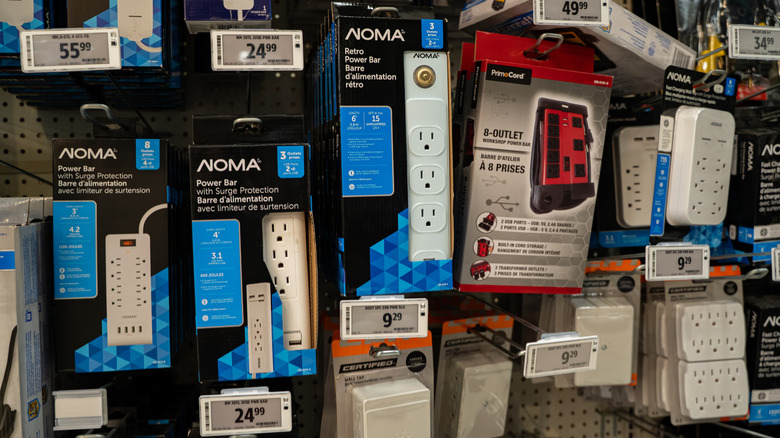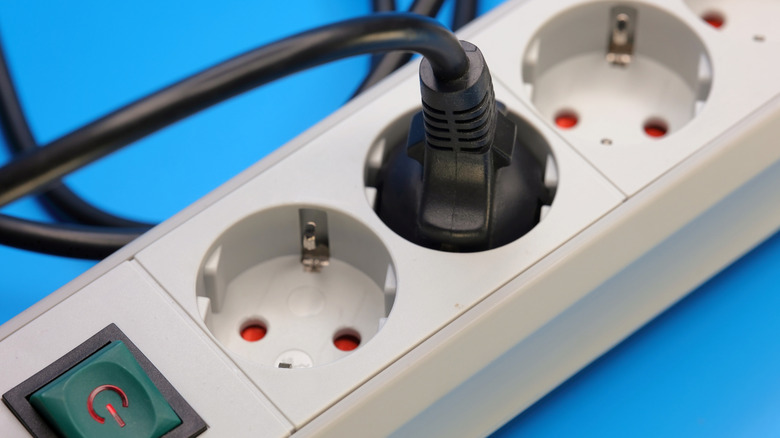Surge Protector Vs Power Strip: What's The Difference (And Which Is Better)?
When you go to plug in your new smartphone only to see an outlet occupied with other electronics, you might use a surge protector or a power strip to expand your available electricity access. Sometimes people might use these terms interchangeably. However, they aren't the same thing, and there's noticeable differences between the two. A surge protector powers your electronics in addition to protecting them from increases, or surges, in electricity. Power strips, on the other hand, are simply an outlet extension cord letting you plug in more than one device at a time. The surge protector is a better choice for your home because it powers while protecting, whereas the power strip in your home just offers electricity.
A power surge can quickly damage plugged-in electronics without the proper protection. When the power undergoes a "surge," this means that the power suddenly comes through the wires at a level higher than normal. The standard maximum voltage for the United States is 120 volts, with most homes wired for this capacity. This number isn't constant though, and bursts of electricity higher than 120 volts can sometimes occur. In a surge, the metal oxide varistors (MOVs) in a surge protector detect, absorb excess voltage, and safely redirect it to the ground away from your outlet. A surge can originate from plugging in too many devices, utility work, old wiring, or lightning strikes. Experts often recommend a surge protector to protect items in your home from a lightning strike.
When to use a surge protector in your home
A surge protector is the better choice for any valuable electronic device sensitive to a power surge. Computers, both laptop and desktop, are best plugged in a surge protector as their delicate components are vulnerable to the high electric activity. High voltage can quickly damage a computer's motherboard and power supply, as well as any installed elements, such as a graphics card. You should also use a surge protector for other costly electronics such as game consoles, smartphones, TVs, internet routers, and home office equipment including printers. For home-use medical equipment, a surge protector is an essential accessory, to ensure consistent, full power on crucial health needs like CPAP machines.
While surge protectors can help keep your vulnerable electronics safe from damage, responsible use is still essential. You should never plug two surge protectors into each other, or "daisy chain" them, as this is a severe surge and fire risk. Before each use, regularly inspect your protector to ensure it's in good working order. Avoid using any protector that is damaged, powers off and on randomly, or features a flickering indicator light, as these are all signs it won't offer the full protection you need. Surge protectors last an average of three to five years. As they age, the efficiency of the MOVs decreases, making it less likely to protect you over time. Unplug your surge protector when not in use or during severe storms to help extend its lifespan. Taking the time to do this will ensure your surge protector is still a form of reliable defense against sudden power surges in the future.

